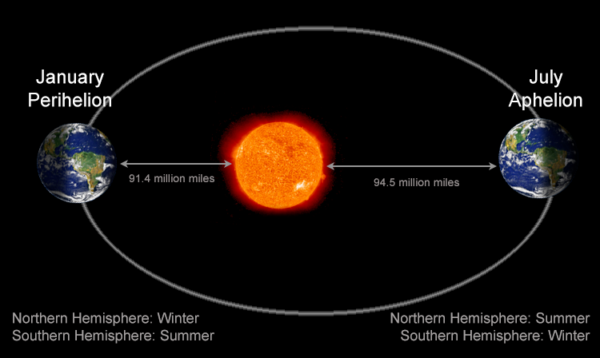The New Year Begins With Earth At Its Closest To The Sun
You might have seen somewhere that if Earth were 10 feet closer to the sun, we would all burn up, 10 ft further and we’d freeze to death. As claims go, you’ll be hard pressed to find one more wrong than this one.
During the first week of the new year, Earth moves closer to the Sun at about by about a mile each hour. The following week it’s moving away from the Sun by about 100 miles each hour, a month from then it’s more like 600 miles each hour.
So fear not, Earth’s habitable is quite a bit larger than your local facebook scientist would have you believe.
The Earth-Sun distance varies per each 3.4 million miles over each year. On January, 2 a few seconds after 11:20 pm CST Earth was at perihelion a mere 91.4 million miles from the Sun, the closest point in its orbit.
You might find it surprising that the Sun is at it’s closest in the winter, at least here in the northern hemisphere. We’ll be at the furthest on July 3, 2019, aphelion.
Some have wondered, might this explain record temps being seen in Australia this week? While it is true that the sunlight falling on Earth is more intense at perihelion than aphelion, the effects of the sun’s proximity are negligible.
Averaged over the globe, sunlight falling on Earth in January [at perihelion] is about 7% more intense than it is in July [at aphelion]” The fact that the northern hemisphere of Earth has more land, while the southern hemisphere has more water, tends to moderate the impact of difference. – Roy Spencer of NASA’s Global Hydrology and Climate Center in Huntsville.
Category: ALL POSTS, Spacey Stuff
















